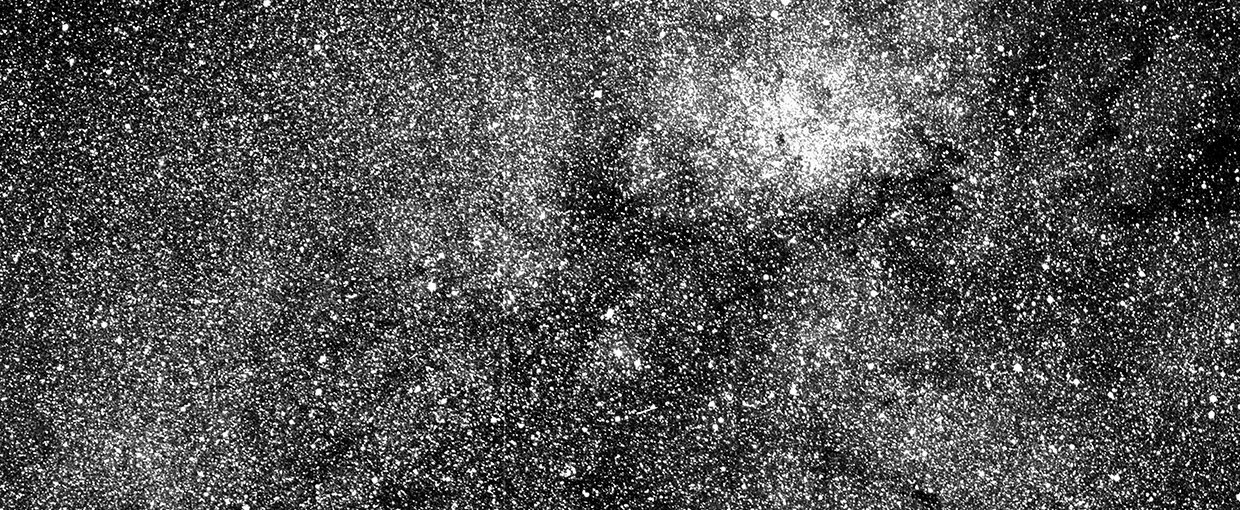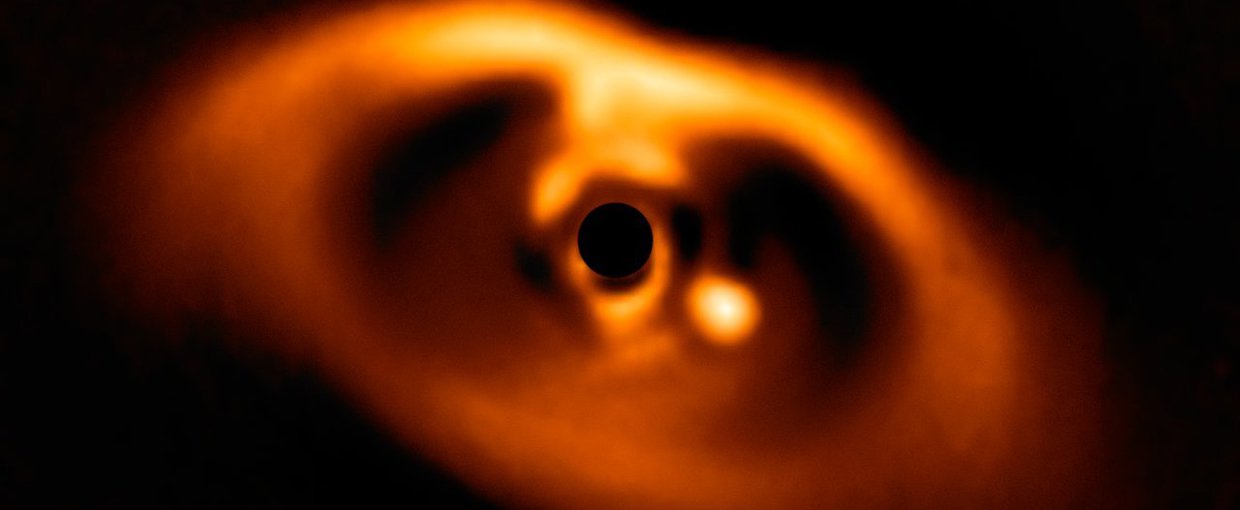
Early this spring, the organizers of an exoplanet science gathering at Cambridge University put out the word that they would host a major meeting this summer. Within a week, the 300 allotted slots had been filled by scientists aspiring and veteran, and within a short time the waiting list was up to 150 more.
Not the kind of reaction you might expect for a hardcore, topic-specific meeting, but exoplanet science is now in a phase of enormous growth and excitement. With so many discoveries already made and waiting to be made, so many new (and long-standing) questions to be worked on, so much data coming in to be analyzed and turned into findings, the field has something of a golden shine.
What’s more, it has more than a little of the feel of the Wild West.
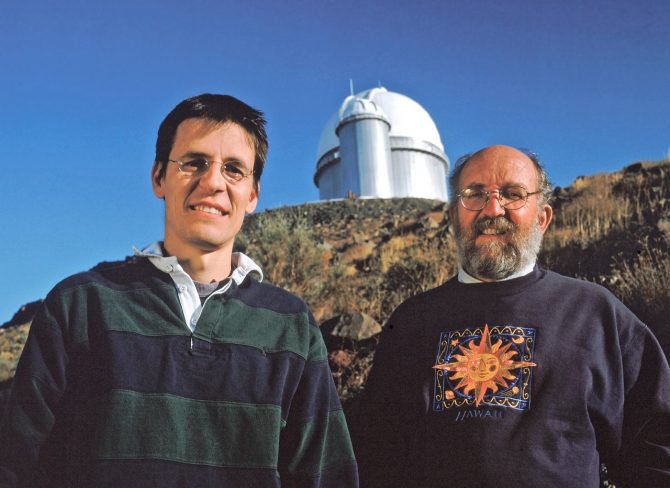
Planet hunters Didier Queloz and Michel Mayor at the European Southern Observatory’s La Silla site.Image credit: L. Weinstein/Ciel et Espace Photos.
Didier Queloz, a professor now at Cambridge but in the mid 1990s half of the team that identified the first exoplanet, is the organizer of the conference.
“It sometimes seems like there’s not much exploration to be done on Earth, and the opposite is the case with exoplanets,” he told me outside the Cambridge gathering.
“I think a lot of young scientists are attracted to the excitement of exoplanets, to a field where there’s so much that isn’t known or understood.”
Michel Mayor of the Observatory of Geneva — and the senior half of the team that detected the first exoplanet orbiting a star like our sun, 51 Pegasi b– had opened the gathering with a history of the search for extra-solar planets.
That search had some conceptual success prior to the actual 1995 announcement of an exoplanet discovery, but several claims of having actually found an exoplanet had been made and shown to be wanting. Except for the relative handful of scientists personally involved, the field was something of a sideshow.
“At the time we made our first discovery, I basically knew everyone in the field. We were on our own.”
Now there are thousands of people, many of them young people, studying exoplanets. And the young people, they have to be smarter, more clever, because the questions are harder.”
And enormous progress is being made.
The pace of discovery is charted here by Princeton University physicist and astronomer Joshua Winn. First is a graphic of all the 3,735 exoplanet discoveries made since 1995, and then the 1943 planets found just from 2016 to today.
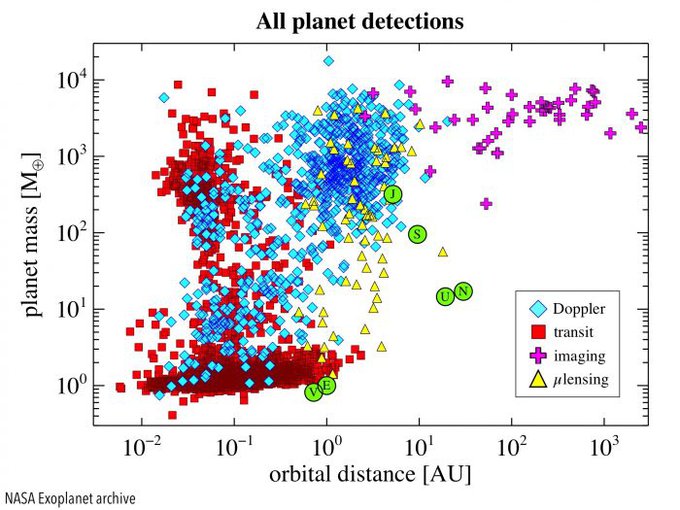
The total number and distribution of known exoplanets, identified by the mass of the planet and their distance from their host star. Techniques indicated in the lower right. Solar System planets circled in green. Data from the NASA Exoplanet archive.Image credit: Joshua Winn, Princeton University.
Many of the planets discovered via the transit method come from the Kepler and K2 missions. Kepler revolutionized the field with its four years of intensively observing a region of the sky for planet transits in front of their star.
The K2 mission began after the second of Kepler’s four stabilizing wheels failed. But adjustments were made and the second incarnation of Kepler has continued to find planets, though in a different way.
While a majority of exoplanets have been detected via the transit method, the first exoplanet was discovered by Mayor and Queloz via the radial velocity method — which involves ground-based measurements of the “wobble” of a star caused by the gravitational pull of a planet.
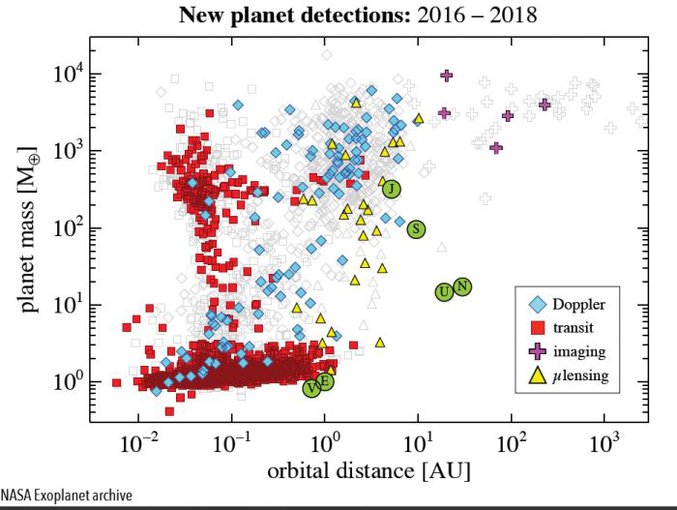
Based on published papers, Winn found that the discovery of 1,943 new planets had been announced in papers between 2016 and today. Winn said the number is not formal as some debate remains whether a small number are planets or not.Image credit: Joshua Winn, Princeton University.
Many astronomers continue to use the technique because it provides more information about the minimum mass and orbital eccentricity of planet. In addition, two high-precision, next-generation spectrometers for radial velocity measuring are now coming on line and are expected to significantly improve the detection of smaller planets using that method.
One is the ESPRESSO instrument (the Echelle SPectrograph for Rocky Exoplanet and Stable Spectroscopic) recently installed by the European Southern Observatory on the Very Large Telescope in Chile. The other newcomer is EXPRES, developed by scientists at Yale University, with support for the National Science Foundation. The instrument, designed go look for Earth-sized planets, has been installed on the Lowell Observatory Discovery Channel Telescope in Arizona.
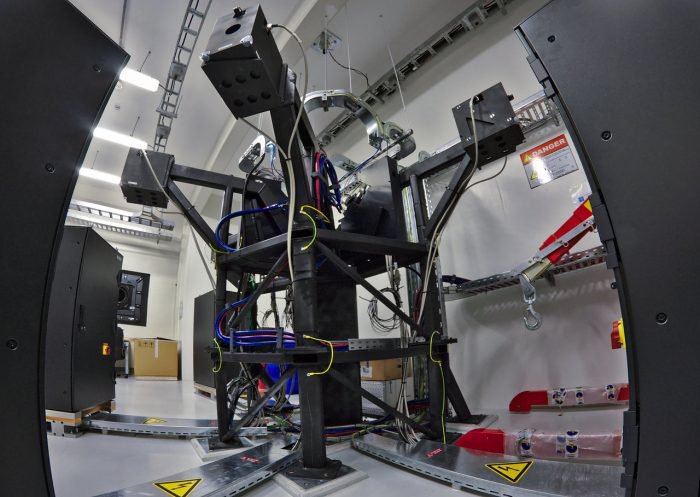
The Echelle SPectrograph for Rocky Exoplanet and Stable Spectroscopic Observations (ESPRESSO) will search for exoplanets with unprecedented precision by looking at the minuscule changes in the properties of light coming from their host stars. This picture shows the front-end structure where the light beams coming from the four Very Large Telescopes are brought together and fed into fibers. They then deliver the photons to a spectrograph in another room, which makes the radial velocity measurements.Image credit: Giorgio Calderone, INAF Trieste.
The conference, held last week, focused both generally and in great detail on many of the core questions of the field: how exoplanets are formed, what kind of stars are likely to produce what kinds of planets, the makeup and dynamics of exoplanet atmospheres, planet migration, the architecture of planetary systems.
And, of course, where new exoplanets might be found. (Mostly around red dwarf stars, several scientists argued, and many in the relatively near neighborhood.)
Notably, many of the exoplanet questions being studied have clear implications for better understanding our own solar system. In fact, it is often said that we won’t really understand the workings and history of our solar system, planets, moons, asteroids and more until we know a lot more about the billions and billion of other planetary systems in our galaxy.
Also notable for this conference is the lack of emphasis on biosignatures, habitability and the search for life beyond Earth. The conference is billed as being about “exoplanet science,” and Queloz explained the absence of habitability and life-detection talks was based on the scientific progress made, or not made, in the past two years.
When it comes to planet detection, however, theory and practice are coming together in searches for exoplanets around smaller and cooler stars, and even around young stars where planets are just forming. Such a planet discovery was announced this week coming from the European Space Agency’s Spectro-Polarimetric High-contrast Exoplanet REsearch (SPHERE) instrument.
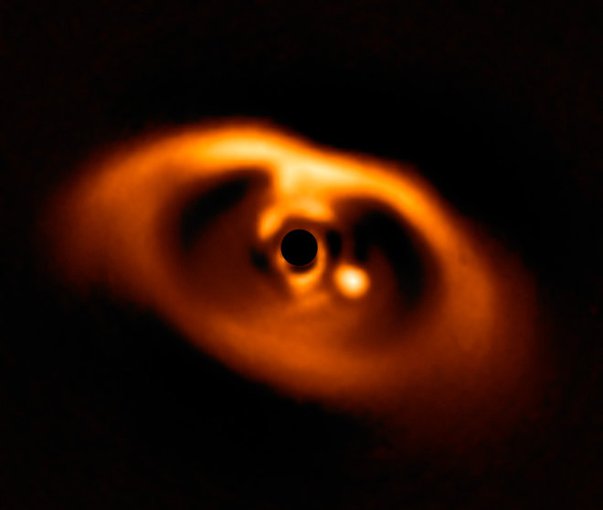
The first clear image of a planet caught while being formed,around the dwarf star PDS 70. The planet is visible as a bright point to the right of center. The star at the center is blacked out by a coronagraph mask that blocks its blinding light. The SPHERE instrument is on the European Southern Observatory’s Very Large Telescope.Image credit: A. Müller et al./ESO.
The Cambridge exoplanet conference is the second in a series begun two years ago by Queloz and Kevin Heng, an exoplanet atmosphere theoretician at the University of Bern and director of the Center for Space and Habitability.
The two had been struck by how European exoplanet conferences seemed to be dominated by senior scientists, with little time or space for the many younger men and women coming up in the field. The presentations also seemed more long and formal than needed.
So using funds from their own institutions to seed the conferences, Heng set up the first in Davos, Switzerland and Didier the second in Cambridge. The idea has caught on, and similar gathering are now scheduled at two year intervals in Heidelberg, Las Vegas, Amsterdam, Porto and hopefully later in Asia, too.
There is no dearth of other exoplanet gatherings around the world, and attendees report that they are also very well attended.
But given sheer amount of work now being done in the field that was so lonely only twenty years ago, they surely appear to be warranted.
And newsworthy, though no always reportable.
Three of the papers discussed in the Cambridge conference, for instance, are under reporting embargo from the journal Nature. And information from George Ricker, principal investigator for NASA’s Transiting Exoplanet Survey Satellite (TESS), about the early days of the mission are also under embargo. Suffice it to say, however, that Ricker reported that things are going well for the exoplanet-hunting telescope.

This test image from one of the four cameras aboard the Transiting Exoplanet Survey Satellite (TESS) captures a swath of the southern sky along the plane of our galaxy.Image credit: NASA/MIT/TESS.
While the initial discovery of an exoplanet was difficult for sure, what the much, much larger field is grappling with now is clearly even more challenging. With that in mind, I asked Queloz what he hoped to see from exoplanets in the years ahead.
“We have reached the point where we know stars usually have planets. But what we are still looking for is an Earth twin — a planet clearly like ours. That we have not found. Before I retire, what I hope for is the discovery of that Earth twin.”
